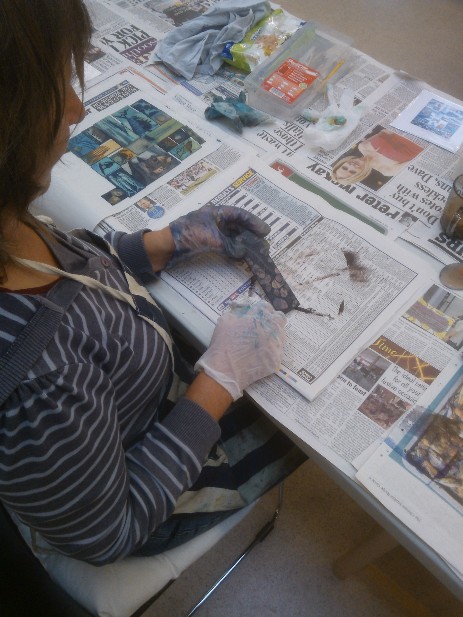The Printing Method - Press Gang Printmakers
Main menu:
The Printing Method
Introduction - THE PRINTING METHOD
Original prints are just that - originals . Each print is hand made and conceived as a print, whereas many reproductions derive from paintings or drawings made in another medium such as oil or watercolour. Printmaking is both a craft and an art in its own right.
There are many different techniques available to the printmaker, but they all share the principle of transferring image to paper from a prepared plate by using pressure. The pressure required depends on the technique - the basic division being between ‘relief’ and ‘intaglio’.
Relief prints such as lino and wood cuts require relatively light pressure to transfer ink from the surface of the plate.
Intaglio prints such as dry point, etching and collagraph needs the force of an etching press to release ink from the incised lines.
The different marks made by the different techniques will be chosen to suit subject and style, varying from the precision possible in the fine lines of an etching, for example, to the loose application of a painterly monotype.
Printmaking is a complex craft, occasionally yielding unexpected results. The task requires an array of equipment from ink-rollers to water baths, cutting tools, sharpening stones, chemicals, hot plates and often a mirror, as every mark on the prepared plate will be reversed by the printing process.
After the plate is made it is inked up with ink either by using brushes and rag or rollers or a combination of all three. Printmakers develop their own style of inking just like painters applying oils to a canvas.
The final stage is "pulling" the print. The inky plate has damp paper laid on it and it is passed through a press to transfer the image onto the paper. Depending on the amount of textures built into the plate, the paper may become embossed resulting in an almost 3-dimensional print.
Original prints are labelled and signed according to recognised convention. Each print is assigned a unique number that provides information regarding the edition size. For example, the number 1/10 would be assigned to print number 1 of 10 identical prints made from a single plate. Unique works like monoprints and monotypes are therefore assigned the number 1/1.

